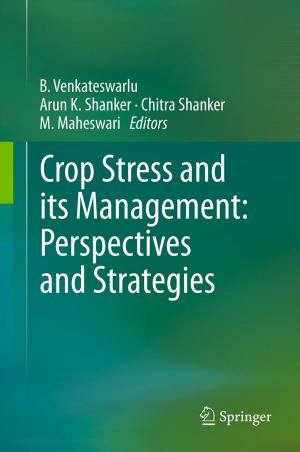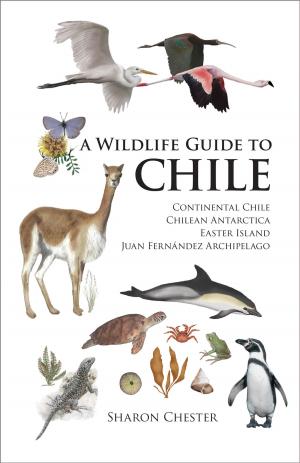The Aging Gap Between Species
Nonfiction, Science & Nature, Science, Biological Sciences, Biology, Nature| Author: | Anca Ioviţă | ISBN: | 1230000692687 |
| Publisher: | Anca Ioviţă | Publication: | September 29, 2015 |
| Imprint: | Language: | English |
| Author: | Anca Ioviţă |
| ISBN: | 1230000692687 |
| Publisher: | Anca Ioviţă |
| Publication: | September 29, 2015 |
| Imprint: | |
| Language: | English |
Aging is a puzzle to solve. This process is traditionally studied in a couple of biological models like fruit flies, worms and mice. What all these species have in common is their fast aging. This is excellent for lab budgets. It is a great short-term strategy. Who has time to study species that live for decades? But lifespan differences among species are orders of magnitude larger than any lifespan variation achieved in the lab. This is the reason for which I studied countless information resources in an attempt to gather highly specialized research into one easy-to-follow book. I wanted to see the forest among the trees. I wanted to expose the aging gap between species in an easy-to-follow and logical sequence. This book is my attempt at doing just that. What are the mechanisms underlying the aging gap between species? I intentionally chose to write the answer to this question in plain English. Aging research is too important to hide it behind the closed doors of formal scientific jargon. This book could not have existed if green tea, libraries and the Internet were not invented. The amount of data I had to browse in order to keep the essential patterns is huge. Yet this book is not exhaustive. This is not a dry academic textbook. I tried to instill life in a topic that is hugely important for the extension of human lifespan. Only you can decide if I achieved this.
Contents
Finding the Forest Among the Trees
Being Reliable Counts
The Mathematics of Aging
The Speed of Senescence
Case Study: Aging in Fish
How to Estimate Chronological Age
Taking Life Slowly
On Temperature and Aging
Dormancy
The Housekeeping Problem
Case Study: Aging in Turtles
Intracellular Junk
Case Study: Aging in Crustaceans
Extracellular Junk
Case Study: Protein Quality Control
The Sweet Poison
Are Cell Membranes the Pacemakers of Metabolism?
Could Reproduction Set up the Pacemaker of Senescence?
The Segregation of Somatic and Germ Cells
Clonal Senescence Versus Mechanical Senescence
Same Species, Different Lifespans
Case Study: Eusocial Species
Case Study: Parasite/Free-Living Populations
Case Study: Island Versus Inland Populations
Hormones as Pacemakers of Senescence
Case Study: Low Hormone Levels in Long-lived Rodents
Is Aging a Form of Dehydration?
The Immune Pacemaker of Senescence
Innate Versus Adaptive Immunity
Senescent Cells
Case Study: Thymic Involution in Negligible Senescence Species
Reverse Engineering the Body
Case Study: Why Are Sponges Potentially Immortal?
Modular Growth and Aging
Case Study: Youth Is Forever Gone. Unless You Are a Hydra. Or an Immortal Jellyfish
Down The Neoteny Lane
Case Study: Neoteny in Amphibians
Case Study: Neoteny in Mammals
It's All About Neoteny
Does Aging Start When Growth Stops?
Case Study: Indeterminate Growth in Crustaceans
The Rate of Growth
Case Study: Aging in Bivalves
Is Telomerase The New Fountain of Youth?
Case Study: Same Species, Different Telomerase Expression
Telomerase Gene Therapy
Case Study: Sea Urchins
Perennial Plants and Their Regenerating Roots
Case Study: The Bristlecone Pine
Unitary Versus Colonial Organisms
Cancer
The Paradox of Peto
Case Study: Cancer in Long-Lived Species
The End
Acknowledgments
Bibliography
Aging is a puzzle to solve. This process is traditionally studied in a couple of biological models like fruit flies, worms and mice. What all these species have in common is their fast aging. This is excellent for lab budgets. It is a great short-term strategy. Who has time to study species that live for decades? But lifespan differences among species are orders of magnitude larger than any lifespan variation achieved in the lab. This is the reason for which I studied countless information resources in an attempt to gather highly specialized research into one easy-to-follow book. I wanted to see the forest among the trees. I wanted to expose the aging gap between species in an easy-to-follow and logical sequence. This book is my attempt at doing just that. What are the mechanisms underlying the aging gap between species? I intentionally chose to write the answer to this question in plain English. Aging research is too important to hide it behind the closed doors of formal scientific jargon. This book could not have existed if green tea, libraries and the Internet were not invented. The amount of data I had to browse in order to keep the essential patterns is huge. Yet this book is not exhaustive. This is not a dry academic textbook. I tried to instill life in a topic that is hugely important for the extension of human lifespan. Only you can decide if I achieved this.
Contents
Finding the Forest Among the Trees
Being Reliable Counts
The Mathematics of Aging
The Speed of Senescence
Case Study: Aging in Fish
How to Estimate Chronological Age
Taking Life Slowly
On Temperature and Aging
Dormancy
The Housekeeping Problem
Case Study: Aging in Turtles
Intracellular Junk
Case Study: Aging in Crustaceans
Extracellular Junk
Case Study: Protein Quality Control
The Sweet Poison
Are Cell Membranes the Pacemakers of Metabolism?
Could Reproduction Set up the Pacemaker of Senescence?
The Segregation of Somatic and Germ Cells
Clonal Senescence Versus Mechanical Senescence
Same Species, Different Lifespans
Case Study: Eusocial Species
Case Study: Parasite/Free-Living Populations
Case Study: Island Versus Inland Populations
Hormones as Pacemakers of Senescence
Case Study: Low Hormone Levels in Long-lived Rodents
Is Aging a Form of Dehydration?
The Immune Pacemaker of Senescence
Innate Versus Adaptive Immunity
Senescent Cells
Case Study: Thymic Involution in Negligible Senescence Species
Reverse Engineering the Body
Case Study: Why Are Sponges Potentially Immortal?
Modular Growth and Aging
Case Study: Youth Is Forever Gone. Unless You Are a Hydra. Or an Immortal Jellyfish
Down The Neoteny Lane
Case Study: Neoteny in Amphibians
Case Study: Neoteny in Mammals
It's All About Neoteny
Does Aging Start When Growth Stops?
Case Study: Indeterminate Growth in Crustaceans
The Rate of Growth
Case Study: Aging in Bivalves
Is Telomerase The New Fountain of Youth?
Case Study: Same Species, Different Telomerase Expression
Telomerase Gene Therapy
Case Study: Sea Urchins
Perennial Plants and Their Regenerating Roots
Case Study: The Bristlecone Pine
Unitary Versus Colonial Organisms
Cancer
The Paradox of Peto
Case Study: Cancer in Long-Lived Species
The End
Acknowledgments
Bibliography















